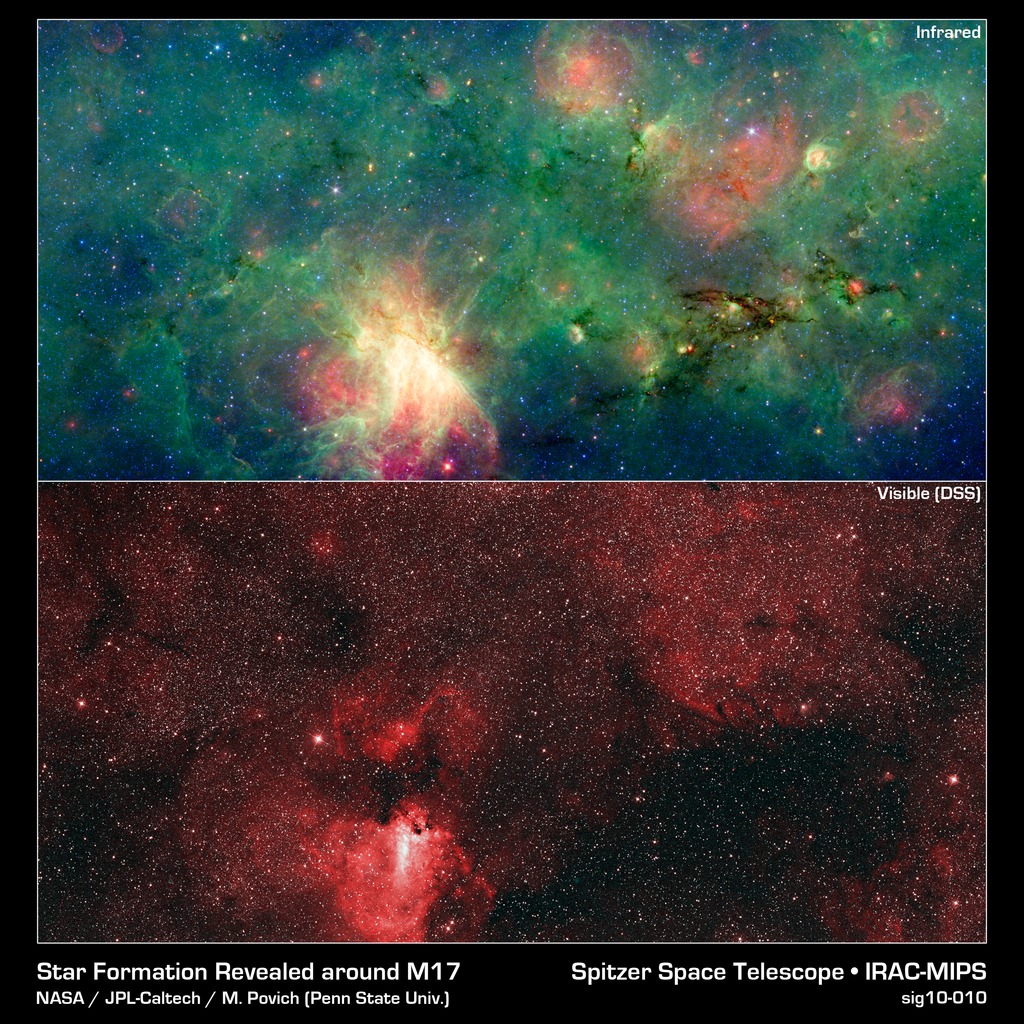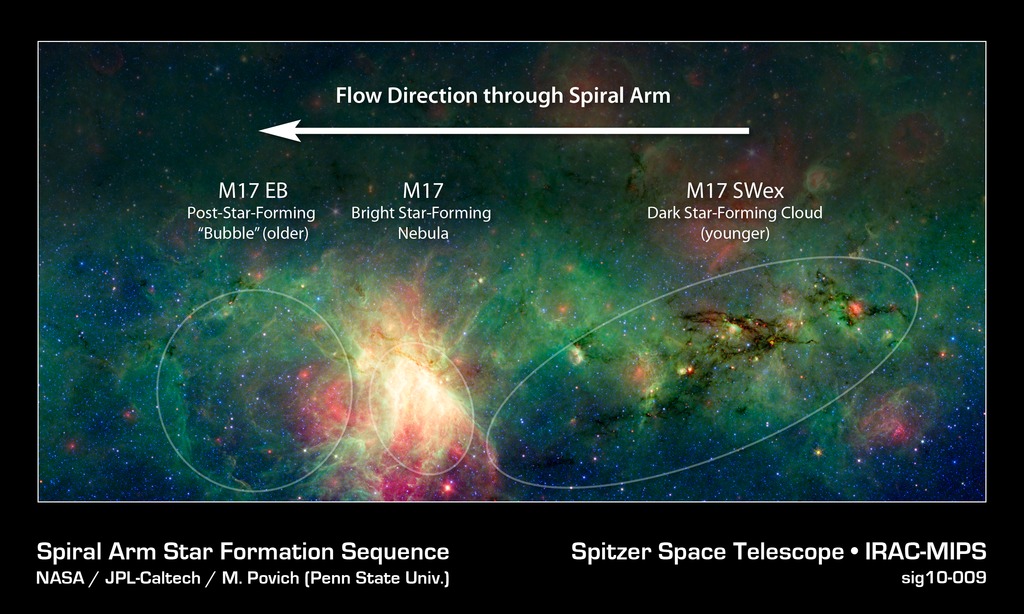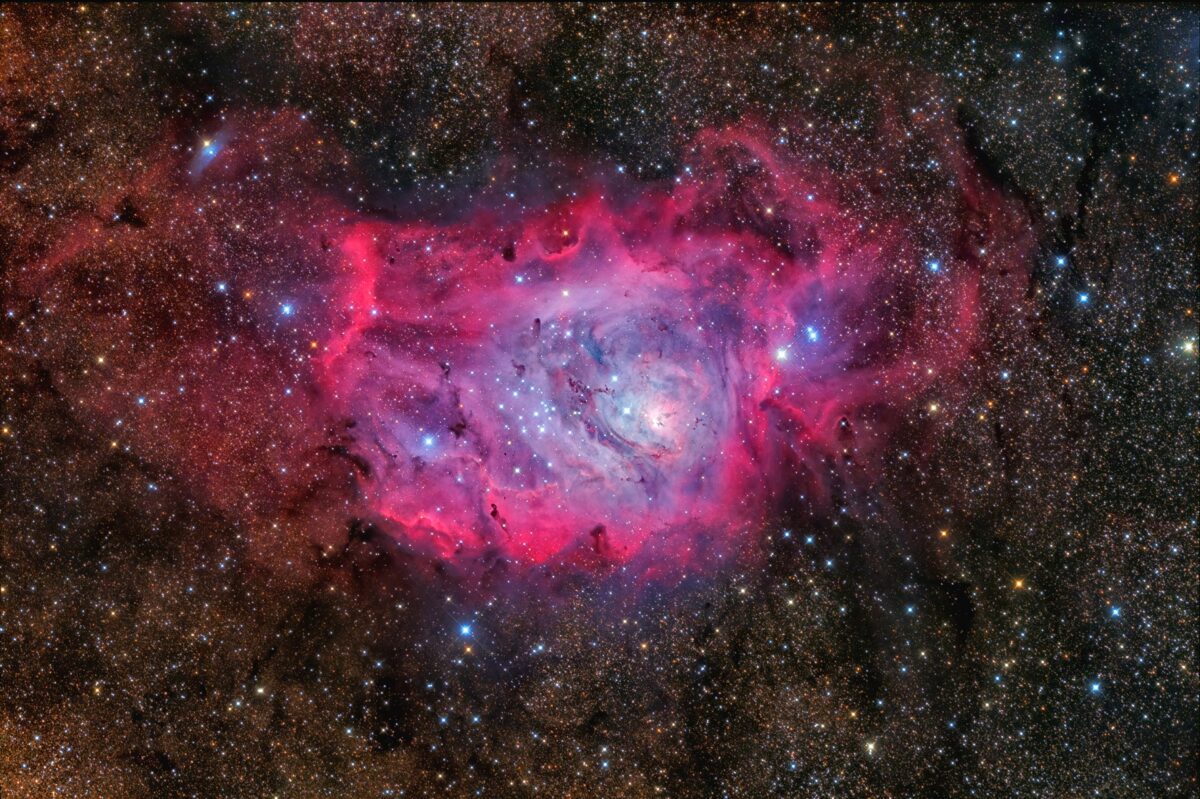SpookyAstro wrote: ↑Fri Sep 08, 2023 8:56 pm
De58te wrote: ↑Fri Sep 08, 2023 12:28 pm
Is there an easy explanation I can tell my 7-year-old grandson explaining why the nebula is mostly 80% red but has a distinctive blue colored clock hand about at the 3 o'clock position? Here's what I know. The red is mostly hydrogen gas absorbing the red as absorbtion from the solar winds. The blue is actually oxygen reflecting the blue color like a mirror. So the boy asks, since the oxygen is located only in that one place, is that proof that there are life forms there around those planets such as here on the blue planet Earth?
Great question and discussion! I would say that what Chris said is pretty accurate, that this area is generally blown out and usually more white in most images I've seen or a more saturated red. We used a HDR technique when processing this image which I think contributed to getting the resulting color, that is to say we combined three different stretched images; one low intensity, one medium intensity and one high intensity to get the resulting image. While there are a lot of images that mostly show a red or red/white color hue of this area there are some that do however capture some bluish hues such as these images:
https://apod.nasa.gov/apod/ap140527.html,
https://apod.nasa.gov/apod/ap170824.html.
When processing images we don't add anything into the image that isn't already there so this color is more a result of trying to tone down the overblown white area and drawing out the color that was there which in this case had a blue hue to it and I rather liked it so we kept it in the image. I could have desaturated it but chose not to. I've seen quite a few OIII images on the internet so there is that present and it is in the area where the bluish hue is in this image however this was a RGB image from a one shot color CMOS camera without OIII added to it so the resulting color is broad-spectrum instead of narrowband. I would also add that it is an artistic interpretation of this area that isn't intended to be scientific, this image was a product of what the camera recorded and then emphasized to get this result

-Tom
I agree with both Chris Peterson and Tom Masterson here. Yes, M17 is mostly red. Yes, the bright middle part contains an important component of red, and it is also brighter than the rest of the nebula, so that it can get a bit overexposed, which can make it look white.
However, I really believe that there
is a blue component here, too. Yes, the blue is mostly from oxygen, but I believe that there is actually scattered blue starlight, too. I remember that astrophotographer David Malin, who was so careful with his colors, once showed that there is a blue rim around parts of the Lagoon Nebula. In other words, blue light from the brilliant blue stars inside the nebula had scattered outside of the red nebula. You can see the hints of blue along the north and south rim of the Lagoon Nebula in the picture below by Andreas Papp:
I think Andras Papp has made his image in such a way as to emphasize the blue component of the Lagoon Nebula. Nevertheless, that doesn't mean that the hints of blue along the northern and southern edges of the Lagoon Nebula aren't there.
I found a hugely interesting LRGB picture of M16 and M17 that shows a hint of blue outside the "bow shock" of M17:
M16 (top) and M17 (bottom) by johnnywang at Astrobin.
You can see what looks like part of a blue rim along the edge of the red "bow shock" of M17. Yes, that could just be reflection nebulosity from stars located along the rim of that bow shock, but I can't shake the suspicion that it might also have something to do with reflection of blue starlight from the brilliant hot stars deep inside M17.
Let's compare the "all broadband" LRGB picture by johnnywang with an "all narrowband" picture of M16 and M17 by Emilio Castillo:
M16 (top) and M17 (bottom) in Hubble palette. Credit: Emilio Castillo.
In the Hubble palette, narrowband greenish cyan OIII is mapped as blue, red hydrogen alpha is mapped as green, and red ionized sulfur is shown as red. Note that in Emilio Castillo's image, OIII dominates in M17, but hydrogen alpha and ionized sulfur dominate in M16. I would in fact argue that based on johnnywang's and Emilio Castillo's images, M17 is indeed a little bluer than M16.
I agree with Chris that most RGB images show the bright center of M17 as either white or as a "nonsaturated shade of red", but there are some LRGB pictures by respected astrophotographers that do show the inner bright part of M17 as faintly bluish.
Ann
 Star Factory Messier 17
Star Factory Messier 17







